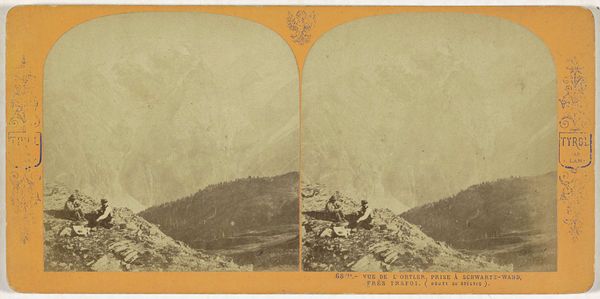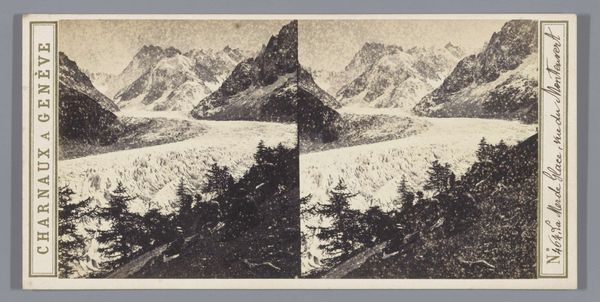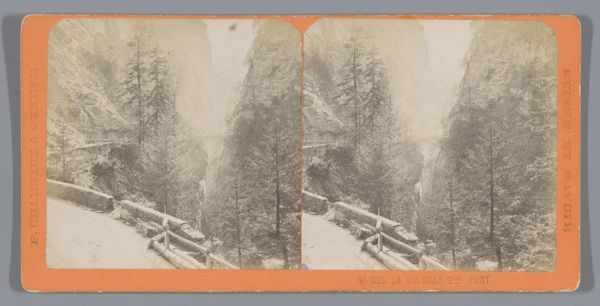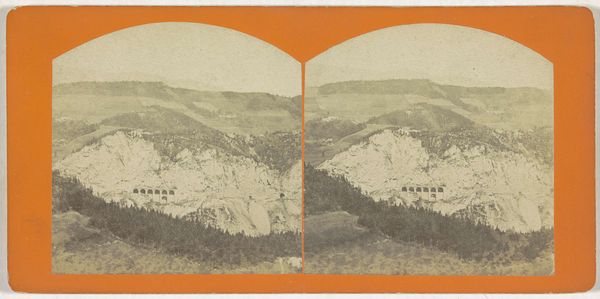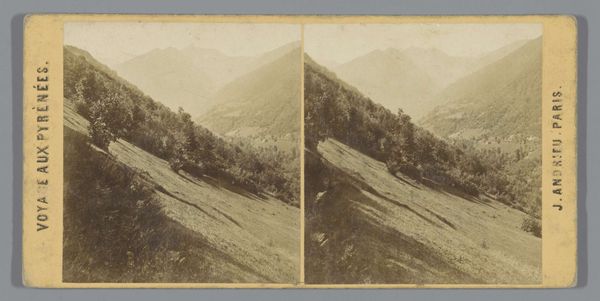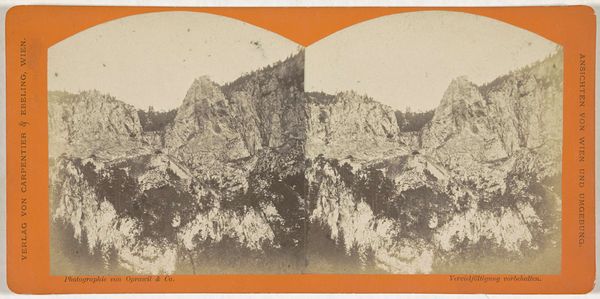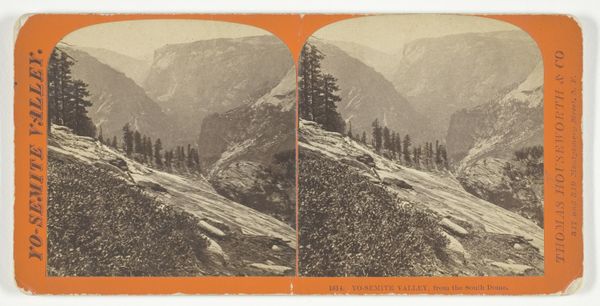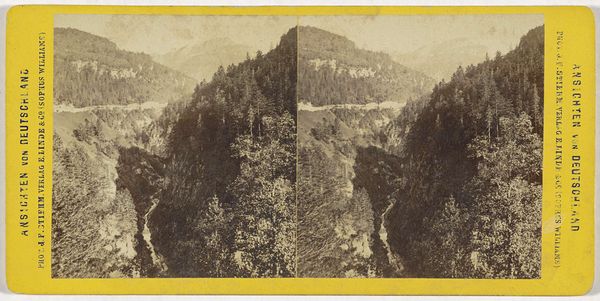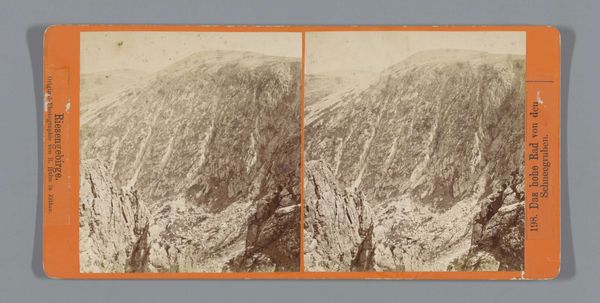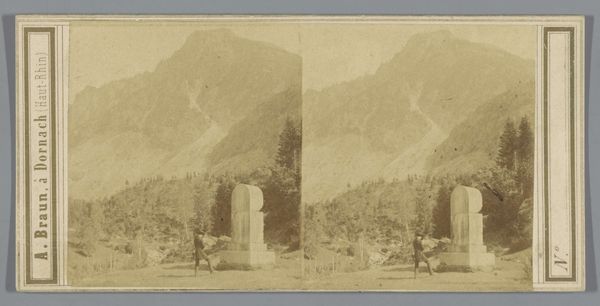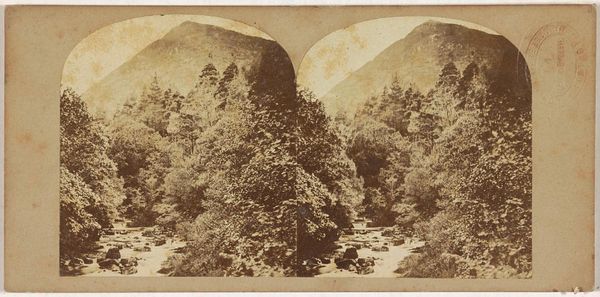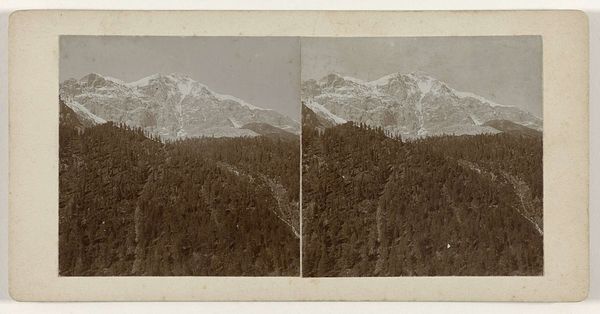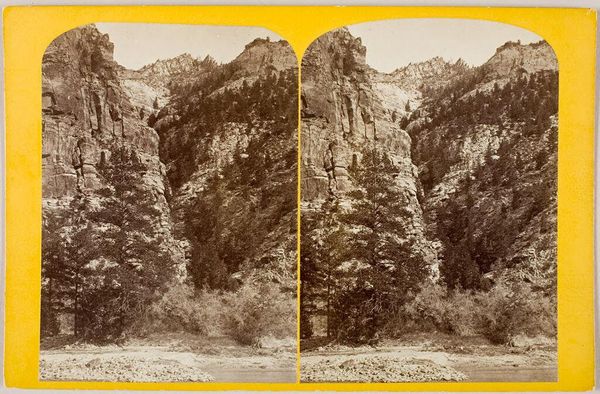
Dimensions: height 87 mm, width 177 mm
Copyright: Rijks Museum: Open Domain
Curator: Let’s examine this intriguing gelatin-silver print attributed to Oprawil & Co., entitled "Uitzicht vanaf het station Klamm-Schottwien," dating sometime between 1868 and 1890. My initial impression is one of hushed reverence; a stillness blankets the scene, despite the potential industrial context suggested by the station's proximity. Editor: Indeed. You see the tangible relationship of place and representation. The albumen print, as a photographic medium of the era, connects the materiality to the era’s production. Notice the texture of the paper stock. These photographic prints were, themselves, commodities for distribution and consumption. Curator: Agreed, the medium is absolutely crucial, but I am also drawn to the symbology inherent in its depiction. The sweeping mountain range suggests an idealized view of nature's power and spiritual transcendence, contrasting perhaps with the industrialization represented by the station. Consider the interplay of nature and technology; one provides solace, the other progress. Editor: That contrast is essential to this historical piece. The material fact of the photographic image speaks to technological advancement but, more critically, it reveals a deliberate consumption of place and labor to create these landscapes. Gelatin-silver processes provided improved tonal range but depended upon material extraction. The scene here reflects economic structures inherent at the time. Curator: That brings forward how landscape itself had come to symbolize prosperity and even, national identity, doesn’t it? One is presented with an idyllic and controlled view, but beneath the surface lurks the undeniable consequences of progress, even the possible echoes of human impacts, not evident at a first glance, I think. Editor: Precisely. So this becomes an accessible artform whose purpose was for the expansion of industry across territories during periods when the consumption of natural resources was the leading objective. The choice of imagery served to ease this transition into new ways. Curator: A really multifaceted perspective on how such art pieces from that period are inextricably linked to how people made sense of a rapidly shifting environment and their place within. It encourages a critical rethinking of industrial advancement as it’s generally seen! Editor: Precisely. And how the material itself encodes this consumption of place, memory and labor in our collective visual consciousness even to this very day.
Comments
No comments
Be the first to comment and join the conversation on the ultimate creative platform.
